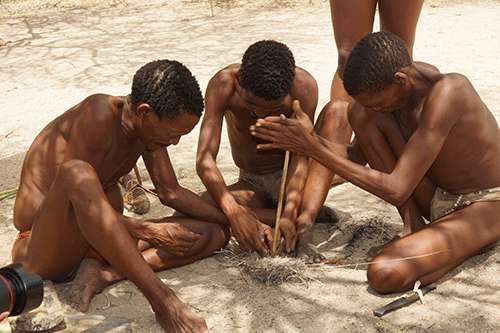OMANDUMBA – Holed up in the sprawling Erongo Mountains on farm Omandumba, the San Living Museum is a truly organic reflection of its name, a living, breathing gallery of actual life on the move.
The museum is home to one of Namibia’s oldest and most recognisable tribe, the Ju/’Hoansi-San community, and its surrounding areas are also home to historic rock paintings and archaeological findings that were left behind hundreds of years ago by the San, who used to live and hunt there.
As a result of colonialism, tribal conflicts, and changing weather patterns, the Ju/’Hoansi-San community, who were the first to inhabit the area, were forced to migrate eastwards and more north-eastwards in search of survival elsewhere.
But since 2008, thanks to the assistance of the government and various civil and cultural entities, the Ju/’Hoansi-San people have returned to what was once their happy hunting grounds and are now thriving and making a living through the San Living Museum, which attracts hundreds of local and international tourists
annually.
Local media representatives and influencers this week experienced first-hand the wonders of the San Living Museum, thanks to the Namibia Tourism Board (NTB)’s promotional tour of the Damaraland and wider Erongo region.
The museum offers an interesting insight into the ancient hunter-gatherers’ culture and the traditional ways of the San people and can also witness first-hand how the Ju/’Hoansi-San people conduct their traditional hunts.
Other programmes at Omandumba are centred around the traditional life of the San within the setting of a village, where the interaction with the visitors is highly valued and acts as a networking opportunity.
The generous elderly San women and young girls offer visitors brief opportunities to learn how to produce jewellery, traditional medicine, bows and arrows, among others.
As can be expected, a rhythmic display of ancient dances, songs, and rituals are always on show at the museum, and the young ones would often be seen on the side-lines playing their games.
On the one hand, the museum has given the San an opportunity to rediscover their old and almost forgotten culture and ways of life, and on the other hand, also serves as a lucrative business for
them.
The museum is run entirely by the San, with 90% of the generated income reinvested in the living museum while the 10% goes to farm Omandumba for services rendered to the museum. Apart from the museum, the San also run a small souvenir shop where visitors can purchase handmade jewellery, bows and arrows, axes, tools, and many more.
-ohembapu@nepc.com.na


